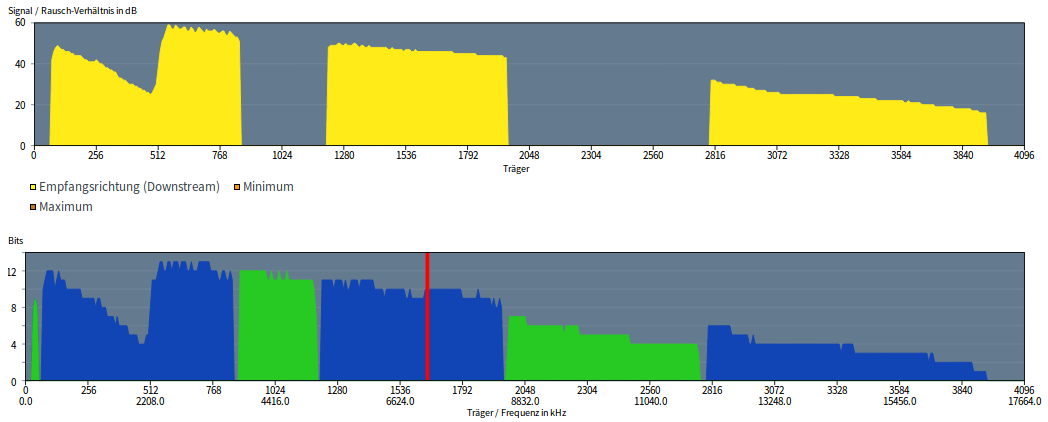Over the past few weeks, I’ve been using Nextcloud Talk quite a bit. While I’m very happy with it in general, I have actually found two scenarios in which the standard setup is not able to establish a connection between the two (or more) parties of a call: In roaming scenarios with my mobile network operator of choice and when I use Nextcloud Talk in the web browser on the PC at work behind the firewall. But there is a fix, at least for one of them.
Category: Uncategorized
CAT-M Evolution in 3GPP Rel. 14
It’s been a while since I talked about LTE based technologies for the Internet of Things (IoT) or Machine to Machine (M2M) communication. Slowly but steadily, we are now seeing NB-IoT and CAT-M1 technology deployed in practice even though I would have thought things would move faster. 3GPP has not slept in the meantime, however, and has continued to evolve both the standards for NB-IoT and also for CAT-M. In this post, I’d like to describe some interesting additions to the CAT-M system that has resulted in specifications for CAT-M2 devices.
Why Is My SNR So Bad At 2 MHz?
One of the nice things of my Fritzbox DSL router is that it draws nice graphs of what is happening on my VDSL line. And one thing I find particularly puzzling in the top graph in the screenshot above is that the signal to noise ratio on the line starts at around 60 db and then quickly decreases down to only 20 db at around 2 MHz. After that it skyrockets again to 60 db and then expectedly degrades again slowly.
Book Review – Troublemakers
 Back on the history track again, I picked up an electronic copy of Leslie Berlin’s ‘Troublemakers – Silicon Valley’s Coming of Age’ about the early days of Silicon Valley.
Back on the history track again, I picked up an electronic copy of Leslie Berlin’s ‘Troublemakers – Silicon Valley’s Coming of Age’ about the early days of Silicon Valley.
I’ve read quite a number of books about the rise of Silicon valley in the past, some on famous people like Steve Jobs but most on much lesser known people that didn’t all necessarily get rich and famous but who nevertheless shaped the industry and the way we live today. ‘Troublemakers’ is a book that again deals with this kind of people and Lesslie has decided to tell the story of a number of them that were not covered in this detail in other books I’ve read on Silicon Valley so far.
5G EN-DC: How Does The UE Signal Its 5G Capabilities?
In many countries, 5G networks will be launched initially in a configuration referred to ‘Non-Standalone Architecture – Option 3’. This means that the mobile device connects to a 4G cell that has a co-located 5G cell which it can then include in the data transfer. This is why ‘option 3’ is also referred to as EN-DC (eUTRAN NR – Dual Connectivity). When I was recently asked how and where a 5G capable mobile devices signal their 5G capabilities to a 4G LTE cell during connection establishment, I could give a rough answer. However, I decided to look up the details in the 3GPP specifications and write them down here as I’m sure this was not the last time the question come up.
Continue reading 5G EN-DC: How Does The UE Signal Its 5G Capabilities?
Tmux, SSH, Nano and Scrolling
While I recently had my Tmux moment and have used the program ever since to multiplex many shell sessions in a single window, I have noticed a couple of quircks. When using ssh in tmux to connect to remote servers, some programs such as htop and the nano text editor don’t act correctly when scrolling. Text that should not be visible anymore is still there and the cursor jumps to the middle of the screen instead of to the end. Also, the ‘home’ and ‘end’ keys are not properly mapped so it’s not possible to use these keys in nano to jump to the beginning and end of a line. After a bit of searching on the web, I found a number of tips and tricks which, when used in combination, fix all of this.
Transferring a Domain
Domain names are a critical piece of the overall ‘Internet’ puzzle as they are used to identify pretty much every server on the Internet. DNS servers are used to translate a domain name (such as blog.wirelessmoves.com) into the IP address that has been assigned to the server. If this lookup fails for any reason, you are petty much dead in the water as your site or services instantly become unavailable. This is why I shied away so far from moving my most used domain from one domain registrar company to another. In theory, the process is supposed to be quite simple, but then, you know, it’s just theory…
Unfortunately, the pain of having my most used domain name registered and operated by noip.com keeps growing. Over the years their annual pricing has become very uncompetitive and, even worse, they continue to refuse to include must-have features such as dynamic DNS for IPv6 addresses into their system. So I decided that before moving away from them I wanted to gain some ‘domain transfer’ experience by doing a test run.
Fortran, Punchcards and Papertapes – Interesting Insights from 1969
 Another book I was recently given is the ‘Fortran-Fibel’ by Hans Breuer. Written in 1969, it didn’t only give me an interesting overview of FORTRAN (FORmula TRANslation), one of the early programming languages that was quite popular in the 1960s on mainframe computers to solve mathematical problems, but also in how mainframes were operated at the time and the ‘cost of computing’ back then.
Another book I was recently given is the ‘Fortran-Fibel’ by Hans Breuer. Written in 1969, it didn’t only give me an interesting overview of FORTRAN (FORmula TRANslation), one of the early programming languages that was quite popular in the 1960s on mainframe computers to solve mathematical problems, but also in how mainframes were operated at the time and the ‘cost of computing’ back then.
Let have a look:
Continue reading Fortran, Punchcards and Papertapes – Interesting Insights from 1969
oneM2M in Practice
 Last year I wrote a two part introduction (see here and here) to oneM2M, a communication framework for machine to machine communication. I called them ‘telescope view’ episodes because I didn’t find any good resources at the time that could explain what oneM2M actually does. Things have improved significantly since then and I recently found two interesting websites that give an introduction at the message level of how oneM2M works.
Last year I wrote a two part introduction (see here and here) to oneM2M, a communication framework for machine to machine communication. I called them ‘telescope view’ episodes because I didn’t find any good resources at the time that could explain what oneM2M actually does. Things have improved significantly since then and I recently found two interesting websites that give an introduction at the message level of how oneM2M works.
Let’s Try A Bit Of That Mastodon
 I do have a Twitter account but rarely use it. Like pretty much all ‘social’ networking sites my main issues with them are that they are run by for-profit companies, they are centralized, push their own agenda and values of what they think is appropriate or not and that I’m not the customer there but the good they sell to advertisers. Over the past 2 years an alternative has been growing that promises to fix most of these issues: Mastodon.
I do have a Twitter account but rarely use it. Like pretty much all ‘social’ networking sites my main issues with them are that they are run by for-profit companies, they are centralized, push their own agenda and values of what they think is appropriate or not and that I’m not the customer there but the good they sell to advertisers. Over the past 2 years an alternative has been growing that promises to fix most of these issues: Mastodon.
